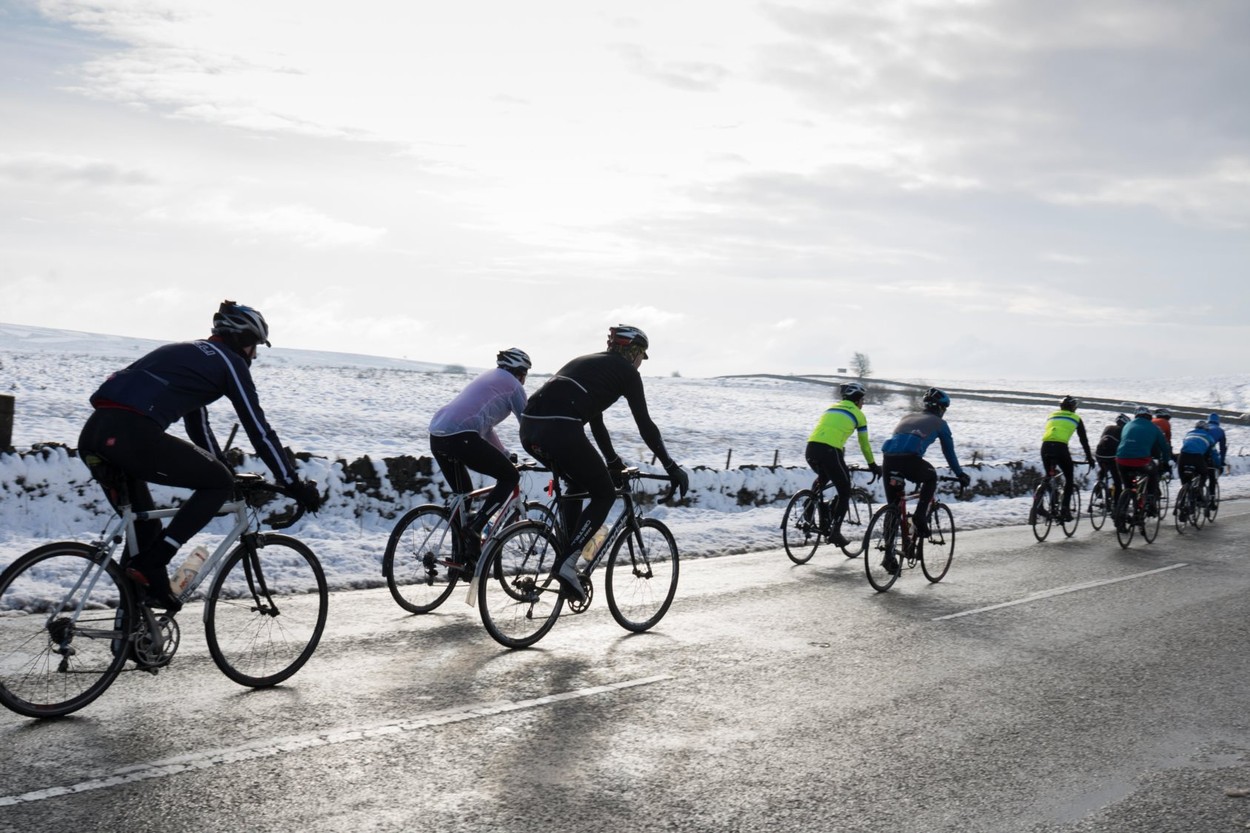Layered clothing is the best way to go to keep yourself warm while keeping the weight of your threads down. Wearing multiple layers of light clothing is much more versatile than one big bulky layer because you can add or remove items to match conditions. Also, multiple layers trap your body heat between the individual items but let sweat evaporate so you don’t get soaked from the inside out.

For rainy days, you should have a good-quality rain jacket of some waterproof and breathable material such as Gore-Tex. And it’s probably a good idea to invest in a balaclava of similar material so that you can keep your head warm and dry and still wear a helmet. Remember: If you are warm when you get outside with your bike, you are overdressed. You should be a little cold when you hop in the saddle.
Don’t forget to protect the extremities. Two pairs of thin gloves in cold weather are always a good idea, as are warm winter socks or, in sub-freezing weather, winter cycling boots if you think they are worth the added expense. Air-activated heat packs, on the other hand, are inexpensive and add wonderful warmth to the insides of your gloves and shoes. Some of them last for up to 10 hours so they will work when commuting both to and from work. For example, a box of 40 pairs of HotHands Hand Warmers go for only €36 at Amazon.

If you can, use your old bike for winter riding, which can be rough on the material. If you’ve got an old mountain bike stored somewhere, dust it off, grease it up and use it while the weather stays wintry. And if you plan on riding in the snow, use the lowest tyre pressure you can short of riding on a flat. Some recommend running on 15 psi, depending on your weight, of course. Be sure to experiment with tyre pressure in the autumn because changing a tyre in winter is hell on wheels (almost literally). Wide tyres and, if you will be dealing with icy conditions, studded tyres can also be useful.
Wash your bike after every ride in rainy, slushy or snowy conditions – or at least rinse it off. Riding in the wet can kick up a lot of salty and/or dirty moisture that can corrode and damage parts. And get fenders to keep the muck off the bike and yourself. After cleaning the bike, put a thick lubricant layer on your bike chain to keep it running smoothly through the cold muck.
Winter is the darkest season, not only because of the many overcast days, and the chances are good that you will be riding in the twilight if not darker conditions at some point. So it is wise to always have a small rechargeable bike light on your handlebar and to have a very loud light on the back to make sure everyone you are sharing the road with knows where you are.




